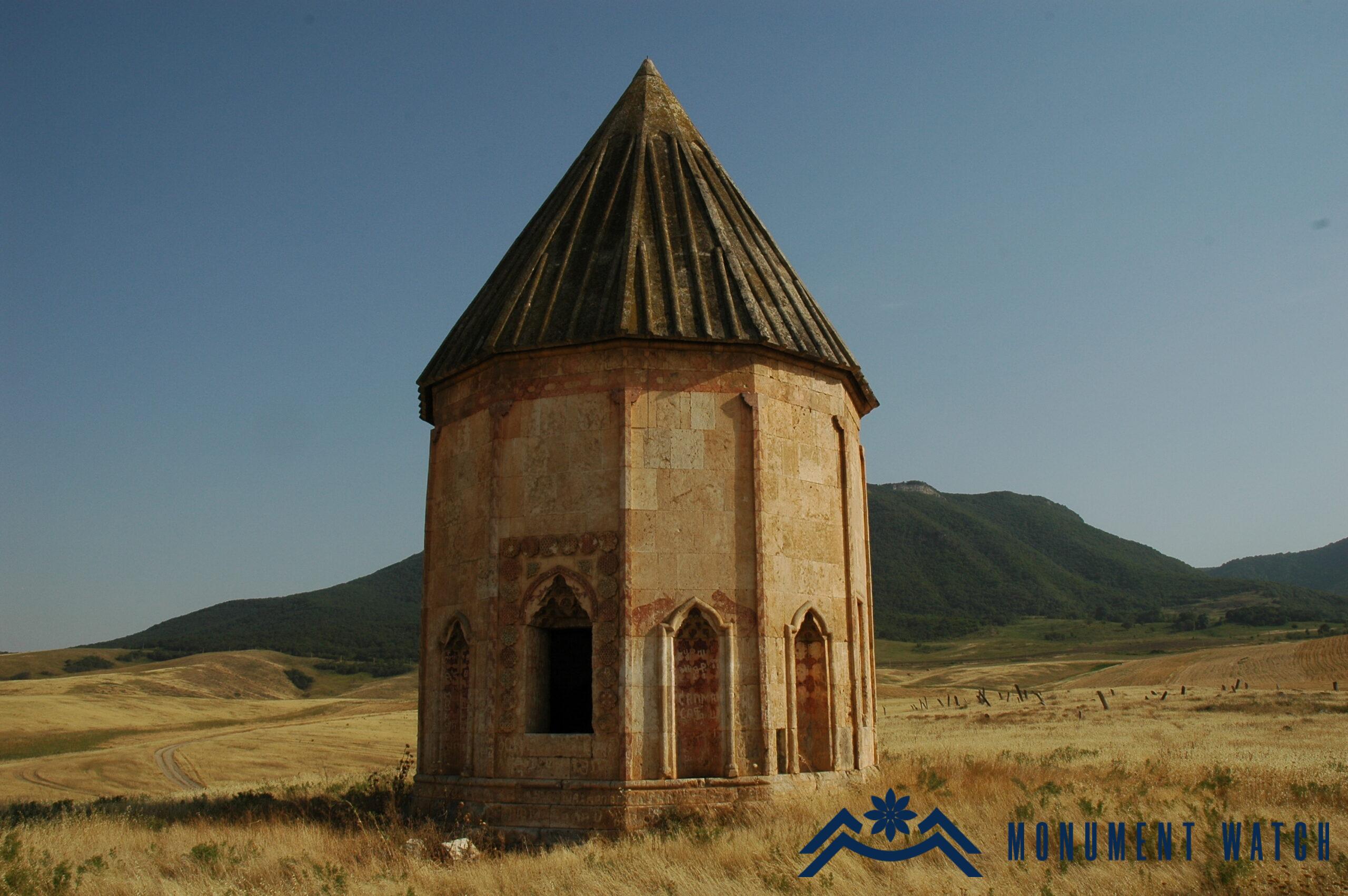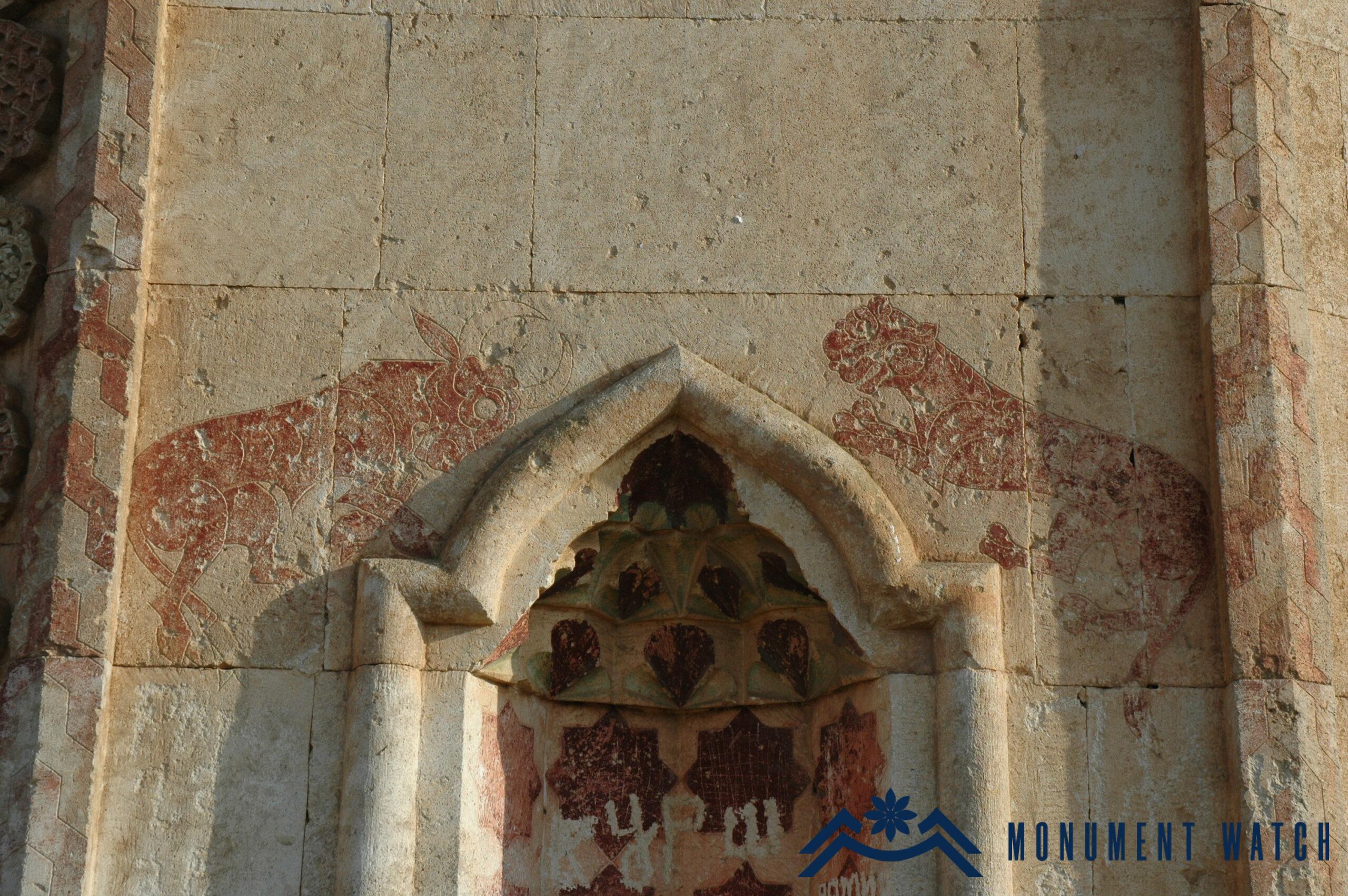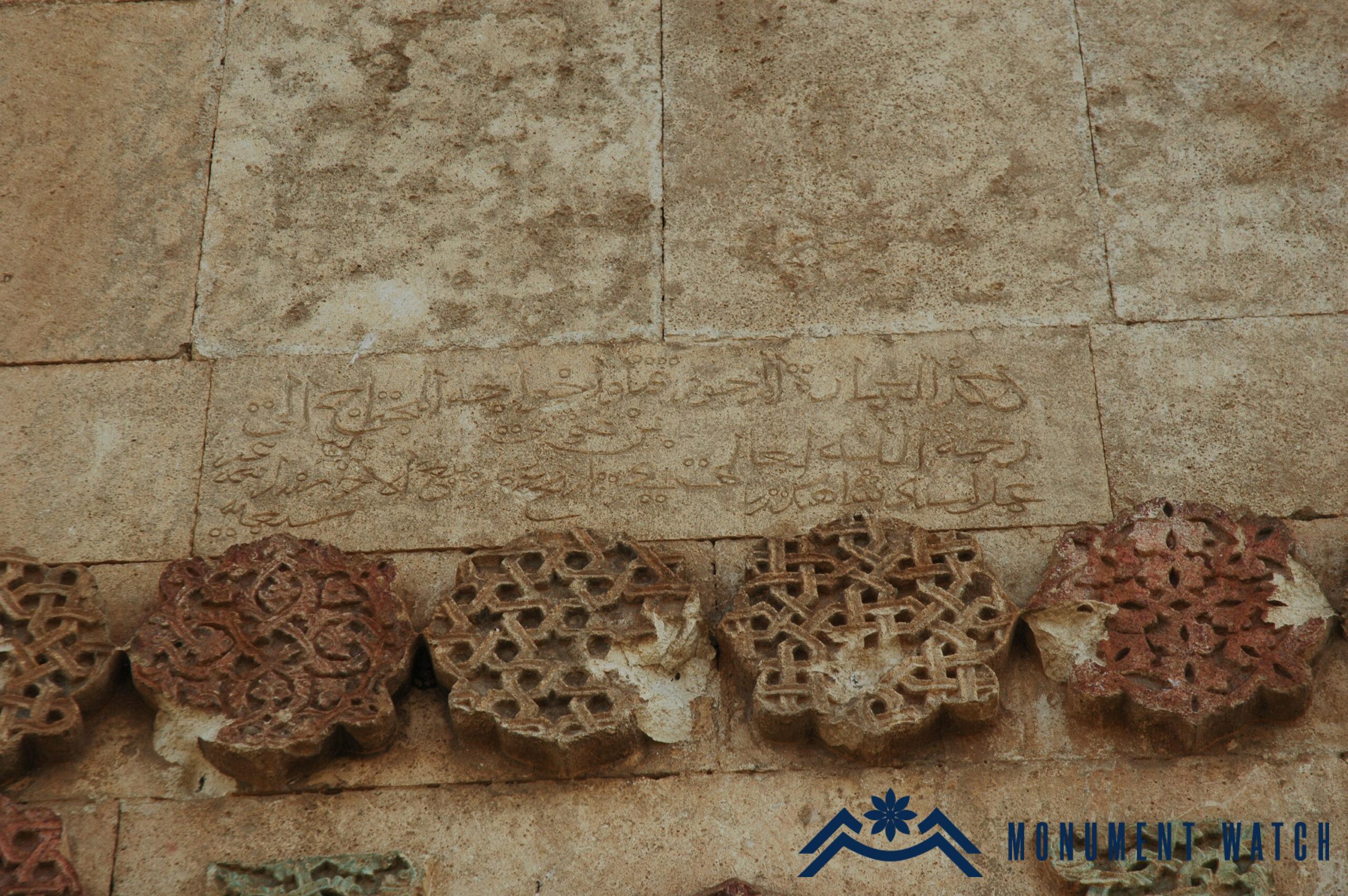The Khachen Islamic mausoleum presented by Azerbaijan’s agitprop (agitation propaganda)
In the video "Islamic Heritage of Aghdam: Deleted Pages" produced by the CBC TV channel of Azerbaijan, false, puzzling, and anti-scientific biased statements were made about the Islamic mausoleum of Khachen (Khachen-Dorbatlu) (https://www.youtube.com/watch?app=desktop&v=9Ax3D7iTv_Q&list=PLq_XDAcNg2BEgmfMAex9xCPJIikbhNbYk&index=4).
All researchers referring to the mausoleum documented its architectural features, appearance, and decoration, showing its relationship with Christian architecture in Transcaucasia. They presented the mausoleum as a unique blend of Islamic and Christian arts and styles (Bretanitsky 1961, 227-228, 240). L. Bretanitsky, who detailed the architecture and sculptures of the mausoleum, sees an obvious similarity between this mausoleum and the Surb Astvatsatsin church-mausoleum in Yeghvard (Figs. 2, 3). This similarity was first noticed by the art critic T. A. Izmaylova (Bretanitsky 1961, 228, 232; Bretanitsky 1966, 188, See more details about the mausoleum: https://monumentwatch.org/en/monument/the-islamic-mausoleum-of-khachen/).
The mausoleum came to the attention of the scientific community only during the Soviet era. Since then, it has been thoroughly researched, and multiple scientific articles and analyses have been conducted on it, providing valuable multi-faceted insights. It is worth noting that many of these studies were carried out by representatives of the academic community of Soviet Azerbaijan and were published in Russian. Additionally, prominent Soviet art critics and architects also studied the monument. There are also many available photographs of the mausoleum.
Considering the evident similarities between the architectural solutions and especially the sculptural compositions of the Khachen Islamic mausoleum and the Surb Asvatsatsin Church of Yeghvard, along with the name of the architect mentioned in the Arabic inscription of the mausoleum, it is highly probable that it was built by Shahik Vardpet(see details: https://monumentwatch.org/en/monument/the-islamic-mausoleum-of-khachen/).
An inscription detailing the construction of the mausoleum is situated just above the entrance (Fig. 2). Despite being published numerous times, nearly all editions contain misreadings concerning the names of the architect and the patron of the mausoleum. Specialists who examined the mausoleum during the Soviet era highlighted this issue. L. Bretanitsky noted that the reason for these misreadings is likely due to the inscription being carved by a non-specialist or unskilled engraver (Bretanitsky 1961, 238). In works published during the Soviet era, the name of the mausoleum's architect was read as Shahbenzer, Shakhenzi, and even Shakhbegozar (Kortoshyan 2020, 38; Bretanitsky 1966, 195; Neimat 2011, 67). The same issue arises with the patron's name, which has been read as Kutlu son of Musa Khoja, Katava Khoja son of Musa, and Kutlu Khwaja son of Musa (Kortoshyan 2020, 38; Bretanitsky 1966, 195; Neimat 2011, 67). The construction date is clear: 1314. It is surprising that, for some reason, the information about the owner of the mausoleum is presented in this Azerbaijani program in the form of an Azerbaijani surname with the suffix "oglu."
It's peculiar that there are claims of vandalism by Armenians and the mausoleum being in poor condition. There's no evidence of deliberate destruction or damage in any photos of the monument, whether from the last 20 years or those taken by Azerbaijanis after 2020. What stands out, however, are the dozens of inscriptions in Cyrillic Azerbaijani, dating from the Soviet era, found on the walls and inside the monument. The Muslim cemetery around the mausoleum shows no signs of damage; the tombstones remain intact, and this could be confirmed by filming if necessary. Rizvanov's claim that Armenians damaged the construction inscription of the monument is particularly surprising, as it remains in place and completely undamaged just above the entrance (Fig. 4). Furthermore, the authorities of the Republic of Artsakh have placed a sign near the monument, and the area has often been beautified. The only damaged and broken item here is the Armenian sign.
When discussing the circumstances surrounding the construction of the Khachen Islamic mausoleum and the historical context, Huseinov asserts that the Mongolian khanate ruling in the region during the 13th and 14th centuries was Turkic. However, this overlooks the diverse historical environment of the region, which includes influences from Georgian, Persian, and Arabic origins that are quite clear. Persian sources from the 13th and 14th centuries offer detailed evidence of the movement of Mongolian troops and the establishment and construction of Mongolian and related noble clans in the vast plain between the Kura and Aras rivers. We recommend the author take a closer look at the works of Hamdullah Ghazvin, Rashid ad-Din, who, as officials of the Mongolian elite referred to by him, provide thorough presentations of the period, including the region, its territories, and the ethnic composition of the population. It would also be beneficial to read the research papers of I. Petrushevsky and V. Bartold.
Experts who have examined the Islamic mausoleum of Khachen recognized a connection between Islamic and Christian cultures in this structure. None of these authors attempted to simplify Seljuk culture or the influences of the Mongol period, as Huseynov does. Instead, they analyzed these terms within the cultural and historical contexts of the 11th and 14th centuries. Many have observed clear parallels with Armenian monuments, including Christian monuments in Artsakh. The links for the published studies will be provided, especially for the presenter.
The TV program states that most of the Islamic mausoleums in the Aghdam region are damaged and destroyed. However, most of them are still intact, as evidenced by photos from the Azerbaijani side taken after 2020.
Bibliography
- Zhamkochyan A., Kalantaryan A., The glazed tiles of the Surb Astvatsatsin Church of Yeghvard, Historical and Philosophical Journal, 1971 N 4, pp. 277-281.
- Karapetyan S., Monuments of Armenian culture in the regions annexed to Soviet Azerbaijan, Yerevan, 1999.
- Karapetyan S., Muslim monuments of Armenian architecture in Artsakh, Yerevan, 2010.
- Hovsepyan G., Azizbeks and their construction business, Bulletin of the Scientific Institute of Armenia, Books A and B, 1921-1922, pp. 177-206.
- Petrosyan H., Garni in the IX-XIV centuries, Yerevan, 1988.
- Petrosyan H., An experience of etiological, iconographic and semantic analysis of late medieval (15th-18th centuries) tombstone sculpture of Armenia, Banber Matenadaran, 2014, N 21, Yerevan, pp. 301-309.
- Poormohammadi 2014 -Poormohammadi Parisa, From the history of Armenian-Iranian cultural relations of the 13th-14th centuries, Armenian studies Bulletin,2014 N 1, pp.136-148.
- Kalantaryan A., Melkonyan H., Archaeological works in Armenia in 1990-2003, Yerevan, 2005.
- Kortoshyan R., The Arabic inscription of the mausoleum of Khachen-Dorbatli, Vardzq, 2020 N 14, pp. 36-40.
- Gyuzalyan L., Iranian medieval tiles on the dome drum of the Surb Astvatsatsin in Yeghvard, Historical and Philological Journal, 1984 N 2, pp. 153-174.
- Bretanitsky L., Krupkin E., Mamikonov L., Mausoleum in the village of Khachen-Dorbatly, Soviet Archeology, 1961, No. 4, p. 227-244.
- Bretanitsky L., Architecture of Azerbaijan XII-XV centuries. and its place in the architecture of the West Asia, Moscow, 1966.
- Bretanitsky L., Weymarn B., Essays on the history and theory of fine arts of Azerbaijan IV-XVIII centuries, Moscow, 1976.
- Useynov M., Bretanitsky L., Salamzade A., History of the Architecture of Azerbaijan, Moscow, 1963.



